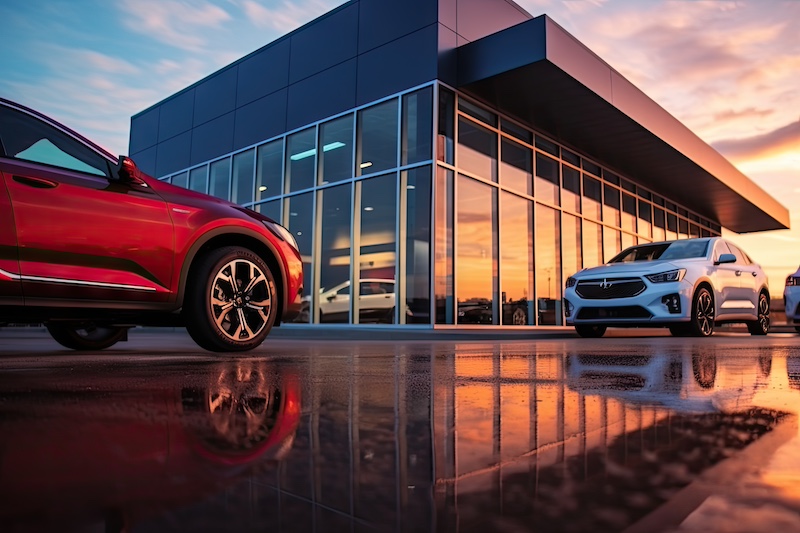Retail sales of new vehicles for December were expected to increase 13.1% from a year earlier to 1,169,000 units, according to a report from JD Power and Global Data last month.
Comparing the same sales volume without adjusting for the number of selling days translates to an increase of 8.9% from 2022.
New-vehicle retail sales for the final three month of 2023 are projected to reach 3,186,700 units, a 9.8% increase from Q4 2022 when adjusted for selling days. Total new-vehicle retail sales for 2023 are projected to reach 12,645,600 units, an 8.4% increase from 2022 when adjusted for selling days.
New Vehicle Sales
“What’s even more noteworthy is that consumer expenditure on new vehicles in 2023 set a record of $578 billion,” said Thomas King, president of the data and analytics division at J.D. Power. “This is the third consecutive year in which U.S. consumers spent more than half a trillion dollars buying new vehicles.”
Sales growth for December was enabled by improving vehicle availability and affordability. Retail inventory levels in December are expected to finish around 1.7 million units, a 7.6% increase from November 2023. While it is a 55.1% increase compared with December 2022, inventory is still nearly 40% below pre-pandemic levels.
King observed that improving inventory is resulting in prices declining as the average sales price last month was $46,055, down 2.7% from December 2022. And sales to fleet customers are rising as vehicle availability improves, projected to increase 13.6% from the previous year.
Dealer Troubles
“Even with the decline in average transaction prices, consumers are on track to spend nearly $50.4 billion on new vehicles this month—the second highest on record for the month of December and 5.1% higher than December 2022,” he said.
As for dealers, King said they are dealing with falling per unit profits. The total retailer profit per unit—which includes vehicles gross plus finance and insurance income—is expected to be $2,729 in December. The good news is that is still more than double the amount in December 2019.
“The primary factor behind the profit decline is the reduced number of vehicles selling above the manufacturer’s suggested retail price (MSRP),” he said. “(In December 2023), only 18.9% of new vehicles are projected to be sold above MSRP, which is down from 32.5% in December 2022.”
December Facts and Figures
Among other figures cited by JD Power were:
- Trucks/SUVs are on pace to account for 81% of new-vehicle retail sales in December.
- Average incentive spending per unit in December is expected to reach $2,458, up from $1,289 in December 2022. Spending as a percentage of the average MSRP is expected to increase to 4.9%, up 2.3 percentage points from December 2022.
- Average incentive spending per unit on trucks/SUVs in December is expected to be $2,645, up $1,346 from a year ago, while the average spending on cars is expected to be $1,880, up $634 from a year ago.
Total aggregate retailer profit from new-vehicle sales for this month is projected to be $3 billion, down 27.1% from December 2022, but up 103% from December 2019. Total aggregated retailer profit for 2023 is projected to be $42 billion, down 23% from 2022, but still more than double the pre-pandemic level.
2024 Trends
Leasing is expected to account for 21.2% of retail sales, up from 17% in December 2022, but still well below December 2019 when leased vehicles made up 30% of all new-vehicle retail sales.
“Despite falling transaction prices, higher interest rates and reduced trade equity are contributing to the escalation of monthly loan installments,” said King. ‘The average monthly finance payment in December is on pace to be $739, up $9 from December 2022. That translates to a 1.1% increase in monthly payments from a year ago. The average interest rate for new-vehicle loans is expected to be 6.9%, an increase of 46 basis points from a year ago.”
Looking ahead, JD Power sees retail inventory rising that will lead to moderation in pricing in 2024. Additionally, anticipated interest rate cuts will help affordability.
King said these trends “will drive an increase in sales, but at the expense of OEM and retailer per-unit profitability. This tradeoff between increased volume and lower per-unit profit means that total profitability for OEMs and retailers will remain very strong relative to historical levels.”








